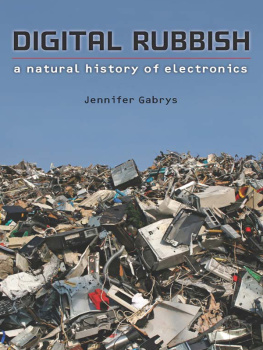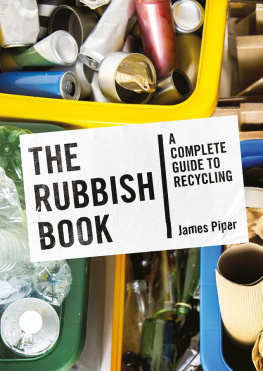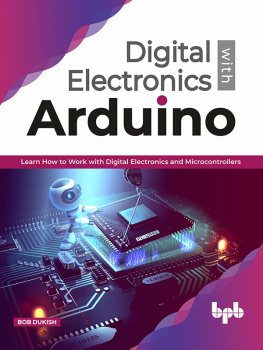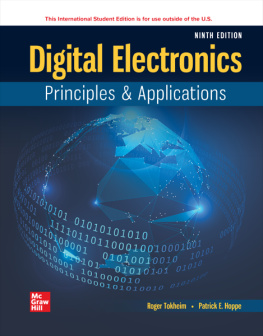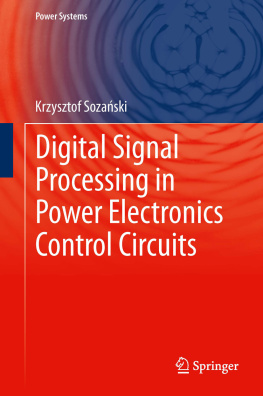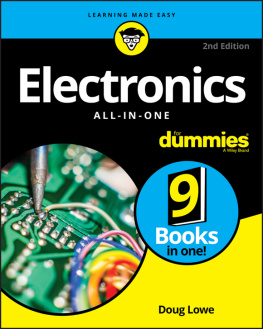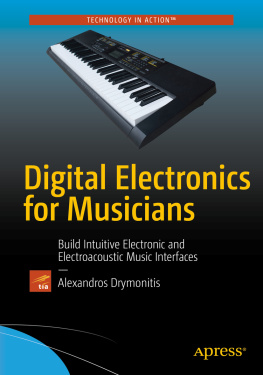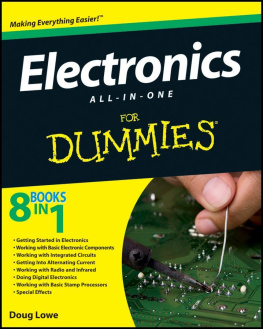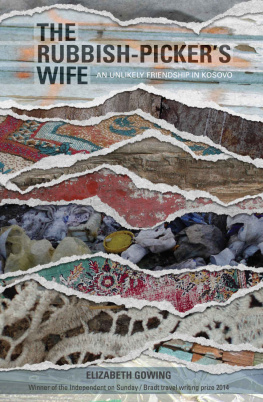Gabrys - Digital Rubbish: A Natural History of Electronics
Here you can read online Gabrys - Digital Rubbish: A Natural History of Electronics full text of the book (entire story) in english for free. Download pdf and epub, get meaning, cover and reviews about this ebook. year: 2018, publisher: The University of Michigan Press, genre: Romance novel. Description of the work, (preface) as well as reviews are available. Best literature library LitArk.com created for fans of good reading and offers a wide selection of genres:
Romance novel
Science fiction
Adventure
Detective
Science
History
Home and family
Prose
Art
Politics
Computer
Non-fiction
Religion
Business
Children
Humor
Choose a favorite category and find really read worthwhile books. Enjoy immersion in the world of imagination, feel the emotions of the characters or learn something new for yourself, make an fascinating discovery.
- Book:Digital Rubbish: A Natural History of Electronics
- Author:
- Publisher:The University of Michigan Press
- Genre:
- Year:2018
- Rating:3 / 5
- Favourites:Add to favourites
- Your mark:
- 60
- 1
- 2
- 3
- 4
- 5
Digital Rubbish: A Natural History of Electronics: summary, description and annotation
We offer to read an annotation, description, summary or preface (depends on what the author of the book "Digital Rubbish: A Natural History of Electronics" wrote himself). If you haven't found the necessary information about the book — write in the comments, we will try to find it.
Gabrys: author's other books
Who wrote Digital Rubbish: A Natural History of Electronics? Find out the surname, the name of the author of the book and a list of all author's works by series.
Digital Rubbish: A Natural History of Electronics — read online for free the complete book (whole text) full work
Below is the text of the book, divided by pages. System saving the place of the last page read, allows you to conveniently read the book "Digital Rubbish: A Natural History of Electronics" online for free, without having to search again every time where you left off. Put a bookmark, and you can go to the page where you finished reading at any time.
Font size:
Interval:
Bookmark:
 Page i Page ii
Page i Page ii DIGITALCULTUREBOOKS, an imprint of the University of Michigan Press, is dedicated to publishing work in new media studies and the emerging field of digital humanities.
Page iiiA Natural History of Electronics
Jennifer Gabrys
The University of Michigan Press
Ann Arbor
First paperback edition 2013
Copyright by the University of Michigan 2011
Some rights reserved

This work is licensed under the Creative Commons Attribution-Noncommercial-No Derivative Works 3.0 United States License. To view a copy of this license, visit http://creativecommons.org/licenses/by-nc-nd/3.0/ or send a letter to Creative Commons, 171 Second Street, Suite 300, San Francisco, California, 94105, USA.
Published in the United States of America by The University of Michigan Press
Manufactured in the United States of America Printed on acid-free paper
Printed on acid-free paper
2016 2015 2014 2013 5 4 3 2
A CIP catalog record for this book is available from the British Library.
Library of Congress Cataloging-in-Publication Data
Gabrys, Jennifer.
Digital rubbish : a natural history of electronics / Jennifer Gabrys.
p. cm.
Includes bibliographical references and index.
ISBN 978-0-472-11761-1 (cloth : alk. paper)
1. Electronic waste. 2. Electronic apparatus and appliancesHistory. I. Title.
TD799.85.G33 2011
363.7288dc22 2010033747
ISBN 978-0-472-03537-3 (pbk. : alk. paper)
ISBN 978-0-472-02940-2 (e-book)
What we need is a somber, thoughtful, thorough, hype-free, even lugubrious book that honors the dead and resuscitates the spiritual ancestors of today's mediated frenzy. A book to give its readership a deeper, paleontological perspective right in the dizzy midst of the digital revolution. We need a book about the failures of media, the collapses of media, the supercessions of media, the strangulations of media, a book detailing all the freakish and hideous media mistakes that we should know enough now not to repeat, a book about media that have died on the barbed wire of technological advance, media that didn't make it, martyred media, dead media. The Handbook of Dead Media. A naturalist's field guide for the communication paleontologist.
BRUCE STERLING, The Dead Media Project: A Modest Proposal and a Public Appeal
This project did not begin with Sterling's modest proposal, but it is in no small way interested in the challenge of charting the dead and dying qualities of media technologies, particularly our contemporary electronic technologies. The paleontological record of dead electronics is surprisingly extensive and diverse. From obsolete software, to the chemical pollution and material waste that issues from microchips, to the sprawling landscapes of technology parks, discards recurrently surface in the electronic realm. Indeed, this project emerged from the discovery that digital technologies, so apparently immaterial, also have their substantial remainders. An often-cited anecdote in the history of computing describes how it was assumed, in the early days of postwar computing, that the demand for digital computers would not exceed even a dozen devices worldwide. With these few bulky and costly mainframes, experts declared, the computing needs of the world would be met. Years later, electronic devices of all shapes and sizes proliferate and pile up at Page vi end of life. Scan any city street, and you may find discarded monitors and mobile phones, printers and central processing units, scattered on curbsides and stacked in the dark spaces between buildings.
These remainders accumulate into a sort of sedimentary record, from which we can potentially piece together the evolution and extinction of past technologies. These fossils are then partial evidence of the materiality of electronicsa materiality that is often only apparent once electronics become waste. In fact, electronics involve an elaborate process of waste making, from the mining of metals and minerals, to the production of microchips through toxic solvents, to the eventual recycling or disposal of equipment. These processes of pollution, remainder, and decay reveal other orders of materiality that have yet to enter the sense of the digital. Here are spaces and processes that exceed the limited transfer of information through hardware and software. Yet these spaces and processes are often lost somewhere between the apparent virtuality of information, the increasingly miniature scale of electronics, and the remoteness of electronic manufacture and disposal. It is possible to begin to describe these overlooked infrastructures, however, by developing a study of electronics that proceeds not from the perspective of all that is new but, rather, from the perspective of all that is discarded.
Where does all the electronic detritus go once it has expired? The theory of waste developed in this book describes processes by which electronics end up in the dump, as well as what happens to electronic remainders in their complex circuits prior to the dump. Just as there are material, social, and economic infrastructures that support the growth and circulation of electronics, so, too, are there elaborate infrastructures for removing electronic waste. Underground, global, and peripheral residue turns up in spaces throughout the life and death of electronics. This study considers how electronics migrate and mutate across a number of sites, not only from manufacture to disposal, but also across cultural sites spanning from novelty to decay. My intention is to crack open the black box of electronics and to examine more closely what sediments accumulate in the making and breaking of electronics. Yet, by focusing on waste, this book is less interested in material comprehensiveness, or all that goes into electronics, and is instead more attentive to the proliferationsmaterial, cultural, economic, and otherwisethat characterize electronics. There is much more to electronics than raw materials transformed into neat gadgets that swiftly become obsolete. Electronics are bound up with elaborate mechanisms of fascination, with driving economic forces Page vii beyond the control of any single person, and with redoubling rates of innovation and decay.
In a time when media occupy our attention most unmistakably when they are present as new media, a study of dead media would, presumably, begin to describe the invisible resources expended and accumulated in these interlocked ecologies. In his dead media proposal, Sterling calls for a paleontological perspective, an approach that would account for the extinctions and sedimentations of lost media technologies, perhaps even with the object of preventing past media mistakes. To pursue this project, I have opted to develop a more particular natural history, which examines outmoded electronics as fossils that bear the traces of material, cultural, and economic events. Rather than amass a collection of outdated artifacts, then, this natural history suggests it is necessary not to focus solely on abandoned electronic gadgets but also to consider the extended sites through which electronics and electronic waste circulate, as well as the resources that assemble to facilitate these circulations. This natural history works not, however, from the assumption of never-ending technological evolution and progress but, rather, from the perspective of transience. What do continual cycles of novelty and obsolescence tell us about our material cultures, economies, and imaginaries? What other stories might emerge from the fossils of these obsolete commodities? In the end, this is not the handbook that Sterling describes. It is not an encyclopedic item that features so many odd but strangely attractive dead media. Instead, with any luck, it is the sort of study that, through another natural history method, traces the fossils of digital media within more heterogeneous material, political, and imaginary registers, while also providing insights into the complex ways that electronics fall apart.
Next pageFont size:
Interval:
Bookmark:
Similar books «Digital Rubbish: A Natural History of Electronics»
Look at similar books to Digital Rubbish: A Natural History of Electronics. We have selected literature similar in name and meaning in the hope of providing readers with more options to find new, interesting, not yet read works.
Discussion, reviews of the book Digital Rubbish: A Natural History of Electronics and just readers' own opinions. Leave your comments, write what you think about the work, its meaning or the main characters. Specify what exactly you liked and what you didn't like, and why you think so.

